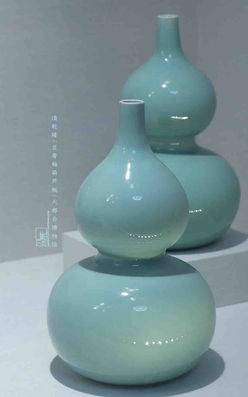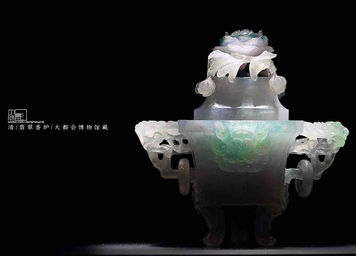Qing Dynasty — Empire of Extreme Centralization and Isolation
The Qing Dynasty (1636 — 1912) was the final feudal imperial dynasty in the history of China.
It was a unified empire established by the minority Manchu, characterized by autocracy, closure policies, and extensive territorial holdings.
Qing Dynasty lasted for 276 years and was ruled by 12 emperors.

Gold Saddle of Shunzhi Emperor (1638 — 1661) Decorated with Dragon Patterns and Gems — Palace Museum (Photo by Dongmaiying)
Brief History of the Rise and Fall of the Qing Dynasty
Political Structure and Social Systems of the Qing Empire

Forbidden City in Beijing the Royal Palace of the Qing Dynasty
Qing Dynasty Facts
-
Most of the Emperors of the Qing could speak Mandarin, Manchu, and Mongolian languages.
-
Queen and imperial concubines of the Qing were mainly selected from Manchu or Mongolian nobles; everyone came from the Eight Banner System.
-
The Eight Banner System was regarding the privilege and management of the Manchu people during Qing's reign:
Qing built the County of Manchu inside many big cities, which were much better constructed but isolated, in which the people of the Eight Banner Systems lived.
Manchu soldiers and their families lived in those counties; they didn't need to work, but they had to practice and train to fight in wars.
They were not allowed to leave the counties far away, wear another style of clothes except their race, nor sell or rent their place to other civilians, even for one night.
Their daughters couldn't get engaged or married before participating in the emperors' selection first.
With their population increasing dramatically and never working, while their military ability kept decreasing fast in peace, they became a massive burden for the whole country.
Until the last emperor of the Qing abdicated the throne in 1912, those privileged counties were officially abolished.

Golden Box of Qing Decorated with Gems — Palace Museum (Photo by Dongmaiying)
-
Qing had the largest scale and most frequent Literary Inquisitions. Tens of thousands of people were sentenced to death because of what they or their families had said or written.
-
Qing emperors obtained absolute honor and power, and officials could not criticize them.
-
Qing Dynasty had signed the most unfair treaties with foreign countries: around 1175 pacts were signed during 1840 — 1912.
-
The last three Qing emperors did not have any kids.
-
Many spectacular royal gardens were built during the Qing period, such as the Summer Palace, the Old Summer Palace, Mountain Resort Chengde, etc.

Danbo Jingcheng Dian in Mountain Resort Chengde, the Main Hall Where Emperors Held Meetings and Ceremonies, Photo from Official Site of Chengde.
Brief History of the Rise and Fall of the Qing Dynasty
The Establishment of the Qing Empire and the March Across the Shanhai Pass
When the Ming Empire (1368 — 1644) was dealing with natural disasters, faction conflicts, and continuous refugee-peasant uprisings, a nomadic regime named Manchu was expanding and getting stronger in northeast China.
They soon established their kingdom and named it Qing.
When a refugee uprising army broke into Beijing City, Ming’s last emperor Zhu Youjian committed suicide. Then, Beijing was occupied by this refugee army while General Wu Sangui was garrisoning Shanhai Pass, an important military site on the Great Wall.
Qing then made an agreement with General Wu Sangui, in which Qing helped Wu defeat the refugee army and support another prince from the royal family to reestablish the Ming Dynasty in the south. At the same time, Wu cedes northern China to Qing.
Therefore, General Wu Sangui opened the gate of the Shanhai Pass and let the Manchu army march across the Great Wall.
They defeated the refugee army together, but the Qing refused to follow the pact. The Qing army kept marching and occupied many cities in northern China.

Main Gate of the Shanhai Pass in Qinhuangdao City
Expanding and Unifying the Nation
In the same year, the Shunzhi Emperor moved to the Forbidden City in Beijing, claimed the Mandate of Heaven, and started Qing's reign as a national regime.
In the following decades, the Qing court forced all the people to wear the Manchu hairstyle (men should shave half of their heads and have a plait) and clothes.
Civilians fought intensely against this policy for over 40 years, and millions of people died because of refusing to follow this hairstyle.
Meanwhile, the regimes of Ming loyalists in the south kept fighting and losing.
In 1683, the Kangxi Emperor conquered the last regimes of the Ming in Taiwan, and rebellions in the northwest, and then the whole of the nation was unified under his reign.

Exquisite Cloisonne Jars with Gilding Lidand Jade Pieces of Qing — Palace Museum (Photo by Dongmaiying)
Developing and Flourishing the Qing Empire
Kangxi's fourth son Yin Zhen, also honored as Yongzheng Emperor, was a remarkable monarch. He implemented a series of policies that challenged the entire ruling class and lightened civilians' burdens.
Under his rule, the empire kept developing; people lived in peace and wealth again.
After the Yongzheng Emperor passed away, he left his son a prosperous kingdom with wealthy civilians and little corruption.

Book Shape Lacquer Box of Qing — Shanghai Museum (Photo by Dongmaiying)
Height and Decline of the Qing Dynasty
His son Hong Li, also honored as Emperor Qianlong abolished those policies that jeopardized the ruling class's benefit, implemented hundreds of large-scale Literary Inquisitions that had countless people executed, and destroyed tens of thousands of books that displeased the Manchu nobles.
Even the encyclopedia of technology named Tian Gong Kai Wu, was also burnt down only because the writer Song Yingxing was loyal to the former Ming Dynasty and had said something that displeased the emperor of the Qing.
When the Qing Empire implemented those cultural havoc activities and the centralization of power, the Western world started the Industrial Revolution.
Therefore, during the 63 years of the Qianlong Emperor's reign, the Qing Dynasty started to decline and far lagged behind the Western world.
Besides, he was the most luxurious emperor in the Qing Dynasty, who spent lots of money building fabulous palaces and traveling around the country.
When he passed away, he left for his son Yong Yan (Jiaqing Emperor), a big empire with an empty exchequer.
Exquisite Artifacts Produced During Reign of Emperor Qianlong (Photo by Dongmaiying)
Invasions, Unfair Treaties, and Struggles of Late Qing
When Min Ning, also honored as Daoguang Emperor, became the sovereign, the Opium War outburst, and then was followed by a series of invasions by foreign powers and the signing of unfair treaties.
Meanwhile, inner rebellion wars outburst nationwide, some of which even built their kingdoms, such as the Taiping Rebellion (1851 — 1864) and Boxer Rebellion (1899 — 1900).
Then the government of Qing started to search for reform. When Empress Dowager Cixi was in actual charge, the Self-Strengthening Movement was implemented and achieved specific progress.
Decades later, the Qing Court encountered a big failure in the Sino-Japanese War.
Then, Guangxu Emperor Zai Tian commanded the Reform Movement of 1898 but failed soon.
Part of Court Painting "Forty Scenes of the Old Summer Palace" (Yuan Ming Yuan Si Shi Jing Tu Yong), by Artist Tang Dai and Shen Yuan in the Year 1744 — Bibliothèque Nationale de France
This Old Summer Palace was Burnt Down by British-French Allied Forces in the Year 1860.
End of the Qing Dynasty and Feudal System
The Qing government kept trying new ways to recover their dignity and power, while other organizations that searched for paths to be strong and wealthy were formed all over the country too.
When Puyi ascended to the throne in 1909, his father served as the regent.
They tried the Constitutional Monarchy, which still put the benefit and privilege of the Manchu aristocrats before everything.
Therefore, many uprising armies started to fight, trying to overthrow the Qing Empire.
Many provinces claimed their independence soon.
In 1902, Pu Yi was forced to abdicate the throne and announce the end of the Qing Empire.

Agate Bowl of Qing — Asian Art Museum of San Francisco (Photo by Dongmaiying)
Political Structure and Social Systems of the Qing Empire
Population
At the height of the Qing Dynasty, historical records suggest that the population of the empire peaked at over 400 million individuals.
Political System
-
The Supreme Authority was initially the Deliberative Council of Manchu Aristocrats (1637 — 1791), which later transitioned to the Grand Council of State (1729 — 1911).
-
The Administrative Departments of the Qing Dynasty were organized into the Six Ministries:
Ministry of Personnel: Appointment, Assessment, and Removal of Officers
Ministry of Revenue: Household Registration, Finance, and Tax
Ministry of Rites: Ceremonies and Education
Ministry of National Defense: Military Affairs
Ministry of Justice: Law, Judiciary, and Punishment
Ministry of Construction: Design and Implementation of National Constructions
Official Selection System
-
Manchu nobles secured the center of power and paramount privileges within the ruling class.
-
Imperial Examinations also played a crucial role in the selection of officials, and the Manchu people held a significant amount of privileges.
Exquisite Porcelains of Qing (Photo by Dongmaiying)
Tax System
-
The tax was paid by money; the number was based on how many lands one owned instead of the number of people.
-
The Capitation tax was officially abolished.
-
Everyone in the Eight Banner System was exempt from paying taxes.

Copper Currency of Qing
Military Service
-
Eight Banner System, which initially consisted of Manchu Soldiers led by their nobles.
The nomadic people worked as farmers in the peace era and fought as warriors in war times.
-
After Manchu established the Qing and occupied the whole of the nation, the original Manchu soldiers became nobles. They were sent to different places to be in charge of security or protect borders.
-
Decades later, the Mongolian and Han armies were also established, though the Manchu army maintained many of their privileges.
-
Until the late Qing, many private forces established by Han officials flourished and took the responsibility of defending the country.
Land System
The Qing Empire implemented a system of Private Ownership of Land, allowing civilians to own, cultivate, and sell their farmland while fulfilling their tax obligations to the state.

Rosewood Furnitures of Qing Decorated with Mother-of-Pearls and Gems — Dayi Liushi Manorial Museum (Photo by Dongmaiying)
Qing Dynasty Art and Artifacts
Photo by Museum Photographer Dongmaiying
Related Articles:
Brief Introduction to Chinese History
Neolithic Era — Primitive Society and Mythical History
Xia Dynasty (Around 2070 BC — 1600 BC) — the First Hereditary Kingdom in China
Shang Dynasty (1600 BC — 1046 BC) — Empire of Bronze Age and Scripts on Oracle Bones
Zhou Dynasty (1046 BC — 256 BC) — Decency, Hierarchy, and the Feudalism System
Spring and Autumn Period (770 BC — 403 BC) — Great Philosophers and Contention of Warlords
Warring States Period (403 BC — 221 BC) — Wars Among the Seven Kingdoms
Qin Dynasty (221 BC — 207 BC) — Epoch of Great Unification
Han Dynasty (202 BC — 220 AD) — Golden Era of Legendary Civilians
Three Kingdoms, Jin, North & South Dynasties (220 — 589) — Wars and Conspiracy in Turbulent Times
Sui Dynasty (581 — 618) — Transient Age and the Inaugurator of Prosperity
Tang Dynasty (618 — 907) — Flourishing Golden Age
Five Dynasties and Ten Kingdoms (907 — 979) — Decades of Wars and Chaos
Song Dynasty (960 — 1279) — Wealthy Empire with Tragic Encounters
Yuan Dynasty (1271 — 1368) — Half Anarchism
Ming Dynasty (1368 — 1644) — Epoch of All Round Prosperity
Famous Historical Figures in Ancient China



















































